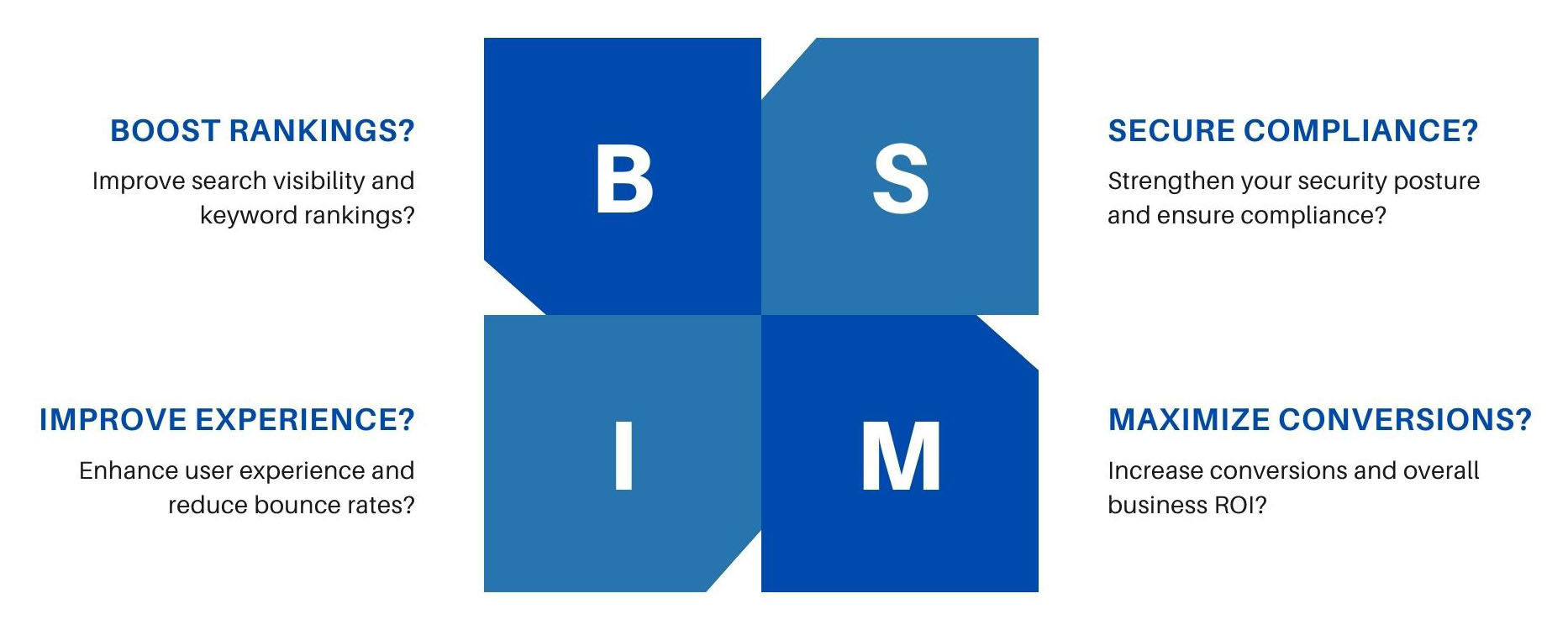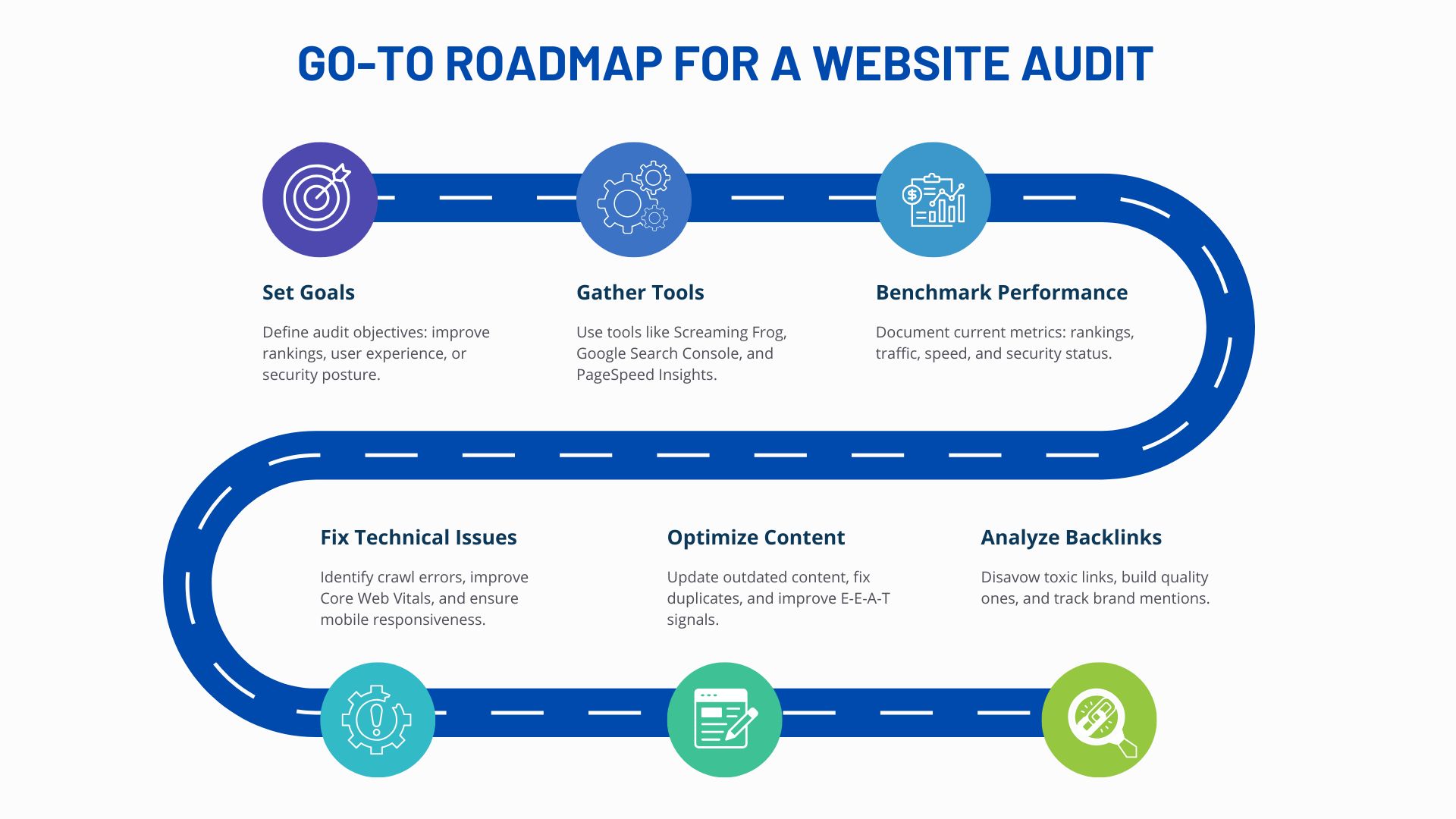
Auditing your website is no longer optional in a world where search algorithms, user expectations, and digital best practices are constantly evolving. A well-executed website audit process delves into your site’s overall performance—covering everything from page speed and mobile responsiveness to content relevance and security protocols.
Understanding how to do a website audit ensures your platform is accessible, user-friendly, and clearly understood by search engines, helping you uncover hidden technical glitches, content gaps, and issues that may be limiting visibility, traffic, and conversions. Staying updated with all the algorithms can help you become Best web development company.
As search engines place growing emphasis on delivering high-quality user experiences, regularly auditing a website keeps you agile and competitive. By following a structured checklist, you can quickly identify errors, improve keyword rankings, and stay competitive in the market. If you’re running a business website that’s struggling to gain traction, it might be time to “take its pulse.” Even small adjustments—tweaking site architecture, enhancing page load times, or updating outdated information—can impact how search engines crawl, index, and rank your content.
In the following step-by-step guide, we’ll break down what a comprehensive website audit entails, why it’s essential for your business, and how you can master the process. Whether you’re aiming for better SERP positions, higher conversions, or a frictionless user journey, a thorough audit will serve as your roadmap to sustainable online success.
A website audit is a comprehensive evaluation of your online property’s technical health, content quality, security posture, and user experience. It focuses on identifying issues that may hinder visibility on search engines, reduce conversions, or compromise user trust. In the current SEO environment—especially as Google continually updates its algorithms—how to audit a website effectively is a key skill for staying ahead of your competitors.
Google’s search algorithms evolve at breakneck speed. Core updates emphasize user experience, site speed, relevance, and E-E-A-T (Experience, Expertise, Authoritativeness, and Trustworthiness). Mobile-first indexing and Core Web Vitals also now play integral roles in determining your site positioning on SERP. Knowing how to do website audit factors helps ensure that you meet these evolving criteria, whether for Google or other engines like Bing or Yandex.
Both in-house SEO teams and Best web development company around you can perform audits. For small sites, a quarterly or biannual website performance audit is often sufficient. For larger enterprises, monthly or ongoing auditing is ideal. Auditing can be done by marketing analysts, SEO experts, developers, security professionals, or a cross-functional team.

Audit: Before beginning to conduct a website audit, set clear goals.
Before you learn how to conduct a website audit, clarify your goals.
Are you aiming to:
Pinpointing these objectives ensures that your website audit process is focused and efficient.
Document your baseline metrics:
These benchmarks help you measure improvement after you fully understand how to audit your website and implement changes.

To understand how to audit my website technically, start with crawlability. Check robots.txt, XML sitemaps, canonical tags, and ensure all value pages are indexed. Use Google Search Console for google and Bing Webmaster tools for Bing to identify any crawl errors or blocked resources.
Tip: Addressing these ensures search engines can find and understand your content.
A strong, logical architecture boosts both SEO and user experience. Create a hierarchical layout of categories, subcategories, and product or blog pages. Balanced internal linking ensures Google’s crawlers and your visitors can navigate smoothly. Consider adding breadcrumbs and a website structure audit report for clarity.
Since Google primarily uses the mobile version of sites for ranking and indexing, use responsive design, no intrusive interstitials, and a smooth mobile experience. Test with mobile-friendly tools and address LCP, FID, and CLS issues to improve Core Web Vitals.
Mapping your content against user intent is a cornerstone of auditing a website focused on quality. Identify pages that fail to drive traffic, meet keyword intent, or user-first content. Update outdated content, remove duplicates, and fill content gaps to create a robust resource hub.
Optimize titles, headers, meta descriptions, and alt attributes. Incorporate target keywords naturally—like “how to conduct a website audit”—without keyword stuffing. Add structured data markup (FAQ, HowTo, Product) and validate it with Google’s Rich Results Test tool. This can improve SERP features and visibility.
E-E-A-T is important for building trust. Provide author bios, credentials, and cite reputable sources. Integrate original research, case studies, and example results like PDFs and Excel sheets.
Tip: Update content on a weekly/monthly basis to align with the latest trends and algorithmic changes.
Read More: Winning Content Marketing Strategies
A website code audit addresses performance bottlenecks. Minimize JavaScript and CSS files, leverage responsive design frameworks, and remove render-blocking scripts. Ensure semantic HTML for better accessibility and indexing.
Evaluate server response times, database queries, and caching mechanisms. Implement GZIP compression, HTTP/2, and consider a best Content Delivery Network (CDN) to speed up content delivery. Using scalable infrastructures and serverless environments can also enhance performance.
Keeping code secure prevents hacks and data breaches. Sanitize user inputs, employ parameterized queries, and update dependencies. Comply with data protection laws like GDPR and CCPA to build trust and reduce legal risks.
Facing a major security issue but don't know how to do a website security audit? Start with automated scans for malware, suspicious scripts, and outdated plugins. Ensure a valid SSL certificate and check HTTPS configurations. Security headers like HSTS and CSP add extra layers of protection.
Secure login pages, payment gateways, and forms. Use two-factor authentication and strict password policies. Make sure your privacy policy is transparent and easy to understand. Regularly back up data and content to safeguard against ransomware and accidental losses.
Schedule periodic penetration tests and set up alerts for unauthorized activities. Continual monitoring ensures you detect issues early. A proactive security stance helps maintain user trust and search engine confidence in your site.
High-quality backlinks are vital for improving rankings and site authority. As part of your website audit process, follow a step-by-step approach to ensure your link profile remains healthy:
Reputation management is an essential element when learning how to conduct a website audit, as brand perception can influence user trust and conversions.
Optimizing for Bing or Yahoo often involves similar best practices. Implement IndexNow to speed up indexing for Bing. Consider emerging AI overview and voice search capabilities. Adapting early to new platforms can yield a competitive advantage.
Structure content to answer user questions directly. Use FAQ and HowTo schema to appear in voice-assisted results. As AI-driven search evolves, concise and authoritative answers can earn featured snippets and voice query visibility.
How much does it cost to audit a website? Complexity, site size, CMS types, and desired depth all affect cost. A small business might invest a few hundred dollars in a basic audit, while large enterprises may spend thousands on a comprehensive technical website performance audit.
How much does a website content audit cost? Simple content assessments can cost a few hundred dollars, while in-depth audits—covering tone, E-E-A-T, and extensive keyword research—may run into thousands.
Improved rankings, higher conversions, and a secure online presence often justify the cost. Over time, these investments pay dividends, preventing costly downtime, security breaches, or lost revenue.
How to make an audit report of a website? Organize your findings by priority and severity. Include screenshots, metrics, and before-and-after comparisons. A clean, actionable website structure audit report guides your developers, content teams, and marketing stakeholders toward improvements.
Assign responsibilities, set deadlines, and use project management tools like Asana or Trello. Monitor changes with Google Analytics and Search Console to see if KPIs improve over time. Continuous monitoring and iteration turn one-time audits into ongoing optimization cycles.
A website audit identifies technical, content, and security issues that affect search visibility, user experience, and trust. By proactively fixing these problems, you improve rankings, conversions, and brand reputation.
The cost of a website audit depends on factors like website size, complexity, audit scope, and required depth. Here’s a general range:
Use automated security scanners (e.g., Sucuri), check HTTPS configurations, apply security headers, regularly update plugins, and conduct periodic penetration tests to identify and fix vulnerabilities.
Creating a website audit report requires structuring findings clearly and providing actionable recommendations:
A basic content audit can cost a few hundred dollars. More in-depth audits, including keyword research, E-E-A-T enhancements, and competitor analysis, can run into thousands.
Evaluate front-end and back-end code for performance, security, and best practices. Use tools like SonarQube and review server configurations, minimize scripts, ensure semantic HTML, and update dependencies to maintain a secure and high-performing site.
Copyright © 2025. Intersys Limited. All rights reserved.